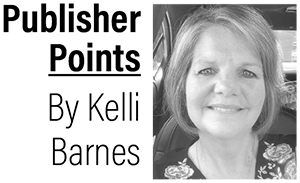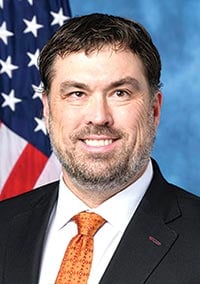 1 Comment
1 Comment
 By Chris Edwards
By Chris Edwards
This email address is being protected from spambots. You need JavaScript enabled to view it.
Last month, a 20-year-old woman named Lanah Burkhardt testified to the Board of Trustees of the Conroe Independent School District that, at age 11, she began a downhill slide due to a kiss depicted in a book.
Burkhardt said she “looked for other books that gave me pleasure,” after the kiss depicted in Drama, by Raina Telgemeier, which was published by Scholastic. Now, that last part is important in what follows here.
Burkhardt’s supposed struggles with an addiction to pornography, which she claimed left her depressed and suicidal by age 13, is more than likely a complete fabrication, and a PR stunt engineered by a publishing house competing for the market occupied by Scholastic Book Fairs.
Burkhardt claimed that “getting rid of Scholastic Books and their book fairs will inevitably protect kids.” The problem is, as a couple of journalists, Judd Legum and Rebecca Crosby, discovered after the public testimony was reported, that Burkhardt has skin in the game of closing down Scholastic Book Fairs. You see, Lanah Burkhardt, according to her since-deleted LinkedIn profile, is a public relations coordinator at Brave Books.
Brave Books is a company that publishes children’s books by right-wing pundits and influencers and sells books to help children “withstand harmful progressive influences,” according to the LinkedIn profile of company founder Trent Talbot.
An offshoot of Brave Books, SkyTree Book Fairs, is an independent, non-profit organization, which is competing for the school book fair market against Scholastic, and receives charitable donations and is afforded tax-exempt status while pushing a culture-warring agenda.
Also, of note: Burkhardt was, as Legum and Crosby discovered, home-schooled, and likely never attended a Scholastic Book Fair.
Burkhardt’s appearance at the Conroe ISD meeting was promoted by SkyTree’s social media accounts. In a post from SkyTree: “We keep hearing ‘kids are old enough to choose books responsibly’, but this clip from a school board meeting in TX proves otherwise. Find out how one innocent kiss in a Scholastic book led this young lady to porn addiction.”
Like so much to do about the culture wars, all of this is much ado about nothing, and should be an insult to the intelligence of anyone with a stake in public education. If you pay taxes, whether you have a kid, or kids, in school or not, then you have a stake in public education.
Culture wars are never about some lofty morality battle. They’re about money, and this is a perfect, simple illustration of that. A publishing house and book fair vendor wants to get contracts to sell their books, and by using their leverage of dealing in abstract/subjective grounds, they think they can fool people. Ultimately, it’s dishonest/deceptive business practices, but other companies get away with far worse, right?
The problem I see is more abhorrent than what some other companies might get away with in the name of capitalism. Our children are, as I’ve written here before, quoting my late grandfather, our future. Our children are not pawns in some nonsensical culture war.
Getting our children to read is hard enough, and Scholastic Book Fairs help to instill in them the fun and excitement offered through books. Scholastic has run book fairs for many years. While taking a trip in the Wayback Machine down Memory Lane, I can recall with fondness how awesome those book fairs were in elementary school.
The titles published by Scholastic and curated via the company’s book fairs, have a great history of engaging young minds in fantastic worlds, but also teaching them about the very real world around them.
In elementary school, I’d be liable to pick up age-appropriate paperback collections of scary stories or fantastic fiction works by the likes of C.S. Lewis or Madeline L’Engle, while classmates might opt for the works of Judy Blume, R.L. Stine and other book fair favorites.
In graduate school, I took a course on young adult literature, and the reading list for the class was full of masterpieces that, often, demonstrated how storytelling could be used to break down sensitive subject matter to young readers. Having been away from public school for many years, and unfamiliar with what kids were reading, I was blown away by the greatness of books like When Zachary Beaver Came to Town, Toning the Sweep and Staying Fat for Sarah Byrnes, among others.
I’ve not read Drama, but according to Brave Books’ website, the book is the reason why people should fight against Scholastic, for the company is “woke,” whatever that means.
Drama is challenged frequently in these book ban-friendly times, as the plot focuses on a theatre student in middle school who experiences many coming-of-age milestones, and the book, a graphic novel, does depict a kiss onstage.
Again, I have not read the book, so I cannot comment on it in any way, but the plot sounds like many of typical coming-of-age stories that comprise so much of children’s literature.
Assuming any of Burkhardt’s testimony is at all true, like for example, if she was addicted to pornography, then should whatever books/magazines/websites that contributed to that be banned? Some people become addicted to alcohol after drinking, so should we ban alcohol…oh, wait, we tried that and it failed, once upon a time.
What is ridiculous (and sad), aside from the near-Saturday Night Live-level ridiculousness of Burkhardt’s testimony, is the fact that nationally, we have a 21% rate of illiteracy, with 54% of the population reading below a sixth-grade level, according to up-to-date statistics compiled by the National Center for Education Statistics. Texas, in these rankings, is number 47, overall, in terms of literacy ranking by state, with 81% of the state literate.
Again, our children are too precious to be another pawn in a ridiculous culture war. Let the market do what the market is going to do, with regard to demand, but keep culture warring and political footballing out of our public schools and away from children.
Burkhardt’s “Reefer Madness”-style call to arms says much more about herself than any book (again, assuming any of it is true).
Pornography addiction is a real thing, and yes, children at those ages experience sexual thoughts, but instead of shaming children experiencing such thoughts with such a testimony and placing blame on a single book for an addiction, the question I wondered when reading about this story is: where were her parents, and why was a child as young as 11 given unrestricted access to the internet?
Ludicrous stories with books as scapegoats aside, there are no “moral” or “immoral” books – there are only good and bad book, and that is all purely subjective ground left up to the reader.
 By Tony Farkas
By Tony Farkas



 Special to the News-Times
Special to the News-Times By Chris Edwards
By Chris Edwards